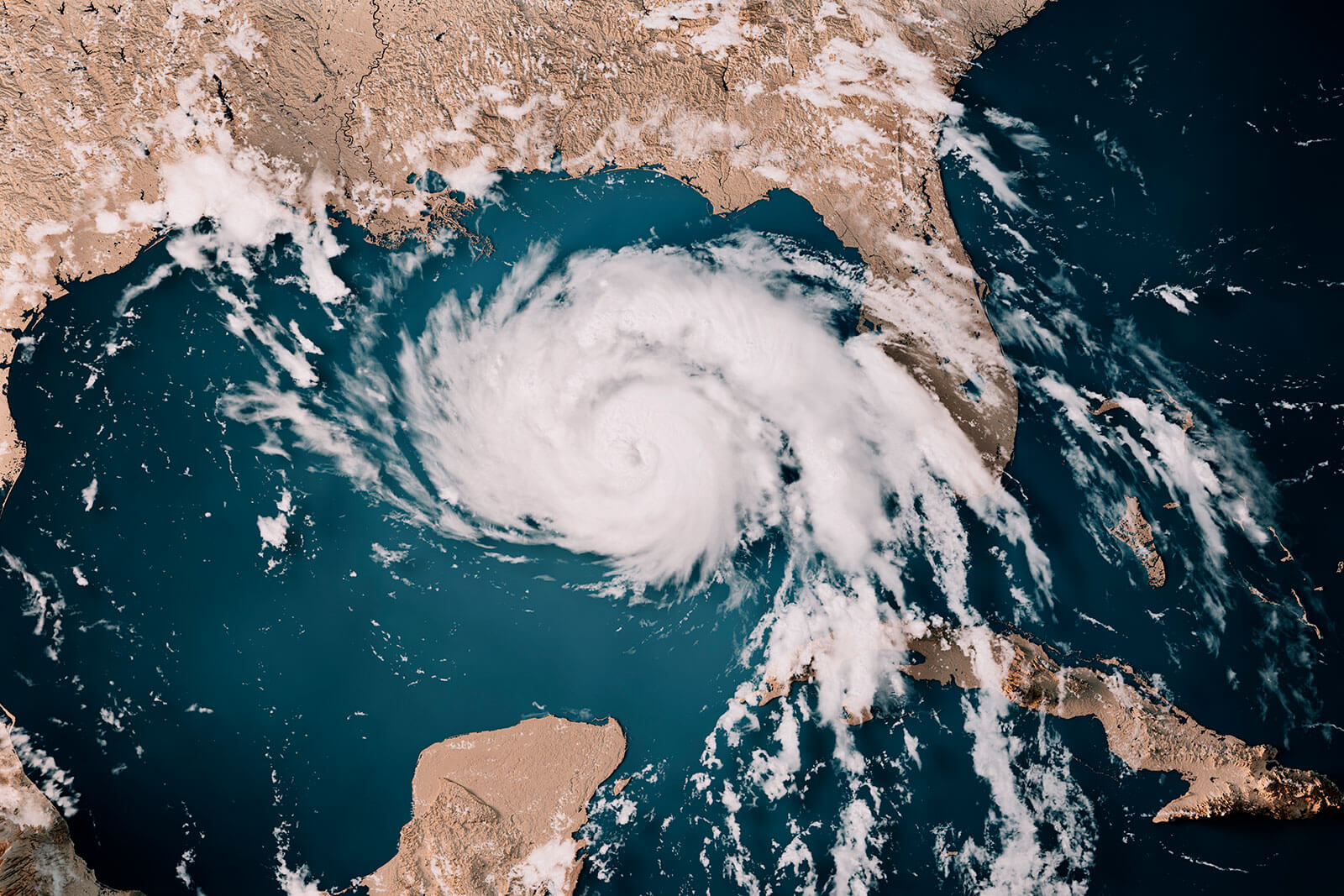
One-year anniversary: Hurricane Ida
Roof loss mitigation learnings from Louisiana
August 29, 2022 — Disaster insights | Homeowner insights | Insurance insights
August 29, 2022, marks the first anniversary of Hurricane Ida. With 150 mph winds, this Category 4 hurricane made landfall in southeastern Louisiana on the 16-year anniversary of Hurricane Katrina, leaving a wake of devastation in its path — roofs ripped off buildings, trees uprooted and power poles leveled.
Just two weeks after the storm, our wind engineering team was in local communities, riding along with adjusters and collecting detailed damage data and wind field observations to understand the impact of the storm, and more importantly, loss mitigation steps to take in preparation for future hurricanes.
Hurricanes can cause significant damage to homes and structures, and roofs often take the brunt of damage after a storm. Our team revealed three roof resilience learnings reinforced by Ida.
1. Extreme winds always find the weakest point
Roofs constructed with weak connections or missed nails are more prone to structural damage during hurricanes. As severe wind strikes a home, the weakest connections fail first, leading to a cascade of failures and more severe damages. This pattern is observed after most severe windstorms, particularly for older homes, and Hurricane Ida was no different. Homes in coastal Louisiana may also be more vulnerable due to the use of pitch frame construction. In this type of build, each piece of the roof is built and connected on-site by hand, introducing human error and a possible point of failure in the load path.
“The pitch frame construction style in this area was interesting,” said Daniel Smith, senior innovation manager for SageSure. “It’s an older traditional style of building, which can perform perfectly fine if every roof member and connection is installed properly, but we saw several instances where too few nails were used or were missing altogether.” Daniel has 10 years of natural hazard research experience, including field deployment for hurricane events in the United States, Caribbean and Australia.
Truss roof construction is the much more common modern alternative to pitch frame construction. Trusses are pre-assembled in factories, which allows for more standardization and quality control, generally reducing the number of potential failure points.
2. Unsealed shingles lead to roof damage
Architectural and three-tab shingles are the most common type of roof coverings in the U.S. These shingles have an adhesive strip on the underside that seals the shingles together and prevents them from lifting in the wind. As the result of normal weathering and repeated exposure to UV rays, these sealant strips wear out, causing the shingles to become unsealed. When this happens, there is nothing to prevent wind from pulling these unsealed shingles up, often in large areas, leaving the home exposed to the elements. In hurricane or wind events, the propensity for unsealed shingles to lift is high.
“Any shingle loss increases the likelihood of water intrusion,” Daniel said. “We help mitigate shingle-related damage and the water-related damage that comes with it by incenting policyholders to use high-quality shingles. We prioritize architectural versus three-tab because we know they perform better.”
No matter what type of shingle your home has, regular roof maintenance, especially in hurricane-prone areas, is one way to ensure your roof is ready to provide the highest level of protection in a storm.
3. A secondary waterproofing layer can prevent leaks
Roofs are composed of many layers to provide proper protection for your home from storms: roof deck, felt underlayment and shingles are the minimum requirement. A secondary waterproofing layer provides an additional layer of protection and is also now required in many coastal areas and helps prevent roof leaks when shingles are damaged or lost.
Shingles are nailed into the underlayment. If the shingles come unsealed and lift in the wind, the underlayment also often comes up. The only protection that remains is the roof decking, but this is installed in sheets, leaving seams exposed where water can enter. Sealing the seams of the roof decking with a waterproof tape is one solution that prevents water from entering. This important solution is relatively inexpensive and may cost less than $300 in materials.
“Water intrusion, which refers to wind-driven water migrating into the building envelope, is one of the leading causes of insured loss from hurricanes,” Daniel said. “It’s costly to repair, and it can propagate through the building very quickly.”
Hurricane-force winds, like those of Ida, pose a strong threat to your home. Ensuring your roof framing system is sound is one way to prevent structural damage from severe winds. Properly maintaining your roof and checking the integrity of your shingle seals is another. When you replace your roof, it’s a good idea to add a secondary water barrier. If you are replacing your roof, consider adhering to FORTIFIED construction standards for the ultimate protection and insurance discounts, and be sure to ask your roofer important questions before they get started on the job.
